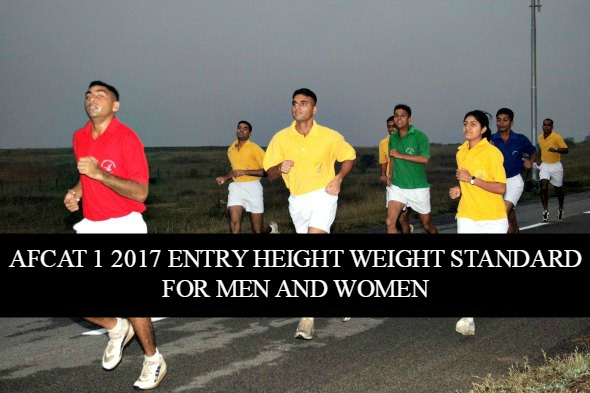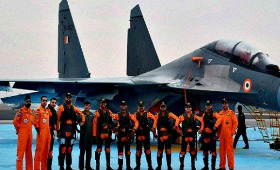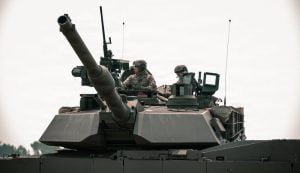Physical fitness is one of the most important prerequisites for joining the Air Force. Irrespective of the branch you are applying for, you must fulfil some basic physical standards. Listed below are some guidelines that identify the general physical requirements that are common for all candidates.
- You must be in good physical and mental health and free from any disease/ disability, which is likely to interfere with efficient performance of duties. There should be no evidence of weak constitution or bodily defects.
- The height and weight standards for men and women differ. Click to view the appropriate standards for each.
AFCAT 1 2017 Entry Height Weight Standard for Men and Women

Candidates who are going for AFCAT to join Indian air force must note down the AFCAT IAF officer’s required physical standards such as physical standards, eye sight, minimum height and weight etc required to join flying, technical and GDOC branches of Indian Air Force.
AFCAT 1 2017 Online Coaching
- Your chest should be well developed. The minimum range of expansion after full inspiration should be 5 cm.
- There should be no disease of bones and joints of the body.
- You should be free of any past history of mental breakdown or fits.
- Your hearing should be normal without any evidence of present or past disease of the ear, nose and throat.
- There should be no sign of functional or organic disease of the heart and blood vessels. Your blood pressure should also be normal.
- The muscles of the abdomen should be well developed without any enlargement of the liver or spleen. Any evidence of disease of internal organs of the abdomen can be a cause for rejection.
- An un-operated hernia can make you unfit for selection. If operated, this should have been done at least six months prior to the present examination and healing should be complete without any potential for recurrence.
- There should be no hydrocele, varicocele or piles. If operated for hydrocele and/or varicocele, this should have been done at least six months prior to the present examination and healing should be complete without any recurrence.
- Urine examination will be done and any abnormality, if detected, can be a cause for rejection.
- Any disease of the skin, which is likely to cause disability or disfigurement, will also be a cause for rejection.
- Vision will be tested. You must have good binocular vision. In case you have undergone or are detected to have undergone Radial Keratotomy, or any other procedure to improve the visual acuity, you will be permanently rejected.
- You should have sufficient number of natural and sound teeth. A minimum of 14 dental points will be acceptable. When 32 teeth are present, the total dental points are 22. You should not be suffering from severe pyorrhoea.
The following are conditions pertaining to women that will entail rejection for all Air Force Duties:
- Acute or chronic pelvic infection
- Severe menorrhagia
- Severe dysmenorrhea
- Complete prolapse of uterus
- Pregnancy/ Amenorrhea
- Any other gynaecological condition, if so considered by the specialist.
Medical Standards for the Flying Branch
If you are applying for the Flying Branch, you must remember that apart from the general physical standards, there are some standards that are specifically applicable to you. Listed below are the physical requirements applicable to both men and women applying to the Flying Branch.
1. Anthropometric Measurements – The acceptable anthropometric measurements for both Men and Women are as follows:
- Minimum Height – 162.5 cms
- Leg Length – Minimum- 99 cms.Maximum- 120 cms
- Thigh Length – Maximum- 64 cms
- Sitting Height -Minimum- 81.5 cms. Maximum- 96 cms
2. X-ray of cervical and Lumbosacral spine will be carried out.
3. The following conditions detected radiologically will disqualify a candidate for all Air Force Duties:-
- Granulomatous Disease of spine
- Arthritis / Spondylosis
- Rheumatoid arthritis and allied disorders
- Ankylosing Spondylitis
- Osteoarthrosis, Spondylosis and Degenerative joint disease.
- Non-articular rheumatism ( e.g lesions of the rotator cuff, tennis elbow, recurrent lumbago etc).
- Misc disorders including SLE, Polymyositis and Vasculitis.
- Spondylolisthesis / Spondylolysis.
- Compression fracture of vertebra
- Scheuerman’s Disease (Adolescent Kyphosis)
- Loss of cervical lordosis when associated with clinically restricted movements of cervical spine.
- Unilateral / bilateral cervical ribs with demonstrable neurological or circulatory deficit.
- Any other abnormality as so considered by the specialist.
For Flying Branches the under mentioned rules will also apply:-
1. Spinal Anomalies acceptable for Flying Duties
- Bilateral complete sacralisation of LV5 and bilateral complete lumbarisation of SV1.
- Spina bifida in sacrum and in LV5, if completely sacralised.
- Complete block (fused) vertebrae in cervical and dorsal spine at a single level.
2. Spinal Condition not acceptable for Flying Duties
- Scoliosis more than 15 by Cobb’s method
- Degenerative disc disease.
- Presence of Schmorl’s node at more than one level.
- Atlanto occipital and atlanto-axial anomalies.
- Hemi Vertebra and / or incomplete block (fused) vertebra at more than one level in cervical or dorsal spine.
- Unilateral sacralisation or lumbarisation (complete or incomplete) at all levels and bilateral in complete sacralisation or lumbrarisation.
3. Vision
- 6/6 in one eye and 6/9 in other, correctable to 6/6 only for hypermetropia. ) Manifest Hypermetropia must not exceed +2.0D Sph, Myopia – Nil and Astigmatism +0.75 D Cyl (within +2.0 D – Max)
- Near Vision N-5 each eye.
- Color Vision CP-1(ML T).
- LASIK Surgery for correction of vision is admissible in Transport and Helicopter streams of Short Service Commission (Flying Branch) If the following condition are fulfilled at the time of Air Force medical examination:-
- LASIK Surgery should not have been carried out before the age of 20 years.
o The axial length of the eye should not be more than 25.5 mm as measured by IOL master.
o At least twelve months should have lapsed post uncomplicate stable LASIK. No history or evidence of any complication.
o The post LASIK corneal thickness as measured by a corneal pachymeter should not be less than 450 microns.
o Individuals with high refractive errors (>6D) prior to LASIK are to be excluded.
o Candidates must not suffer from colour or night blindness.
4. Occular Muscle Balance – Phorias with the Maddox Rod Test must not exceed:
At 6 meters
- Exophoria 6 prism Diopters
- Esophoria 6 prism Diopters
- Hyperphoria 1 prism Diopters
- Hypophoria 1 prism Diopters
At 33 cm
- Exophoria 16 prism Diopters
- Esophoria 6 prism Diopters
- Hyperphoria 1 prism Diopters
- Hypophoria 1 prism Diopters



















